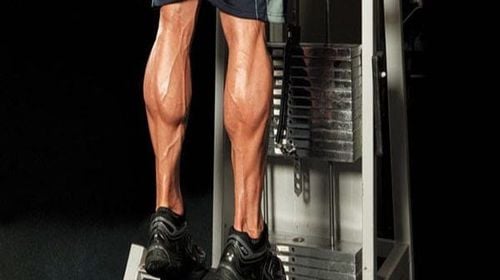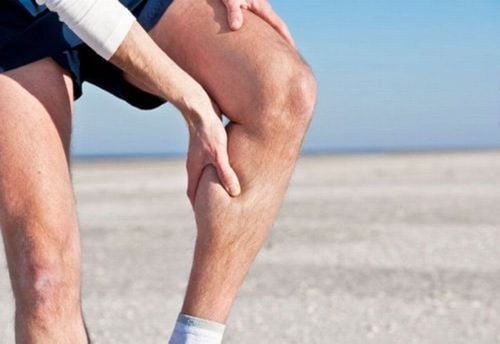This is an automatically translated article.
Leg exercises are often more painful, results are obtained more slowly (unsatisfactory in the short term) but it is more impactful than other exercises.1. What are the effects of leg exercises?
Leg exercises engage the major muscle groups of the body, helping to improve overall performance and support other forms of movement. Building strong legs and lower body helps prevent injury and manage chronic conditions like arthritis, cardiovascular disease, and diabetes.
Leg training is important for a few reasons:
1.1 Build more muscle Testosterone is an important steroid hormone produced naturally in the body that plays an important role in men's health , which enhances the development of muscle mass and overall health. Compound movements like squats and deadlifts use large muscle groups.
A recent study published in the European Journal of Applied Physiology measured hormonal responses during intense resistance training sessions. They found that the most striking changes appeared in testosterone response. In addition, leg exercises also stimulate the body to produce the hormone cortisol - which helps the body respond to stress and increase fat metabolism; HGH (human growth hormone) - promotes muscle growth, boosts immunity and promotes fat metabolism.
1.2 Burn more calories The glutes, aka the glutes, are the largest muscles in the body. Working large muscles like the glutes requires more energy. This means the body will burn more calories.
A study published in the Journal of Applied Physiology tracked athletes' energy expenditure and metabolism after a series of heavy lifting. The results showed that after 90 minutes of training, which included compound exercises like squats and deadlifts, the athlete's metabolic rate - the amount of energy expended - spiked and continued to do so for several hours. there.
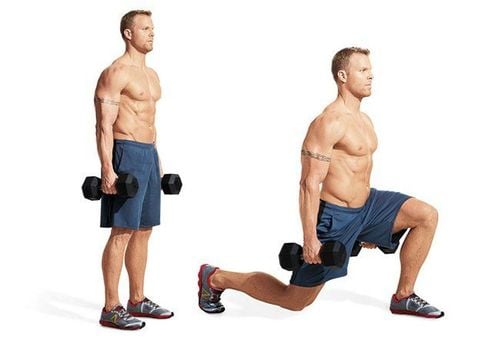
Thực hiện bài tập chân sẽ đốt cháy nhiều calo
1.3 Strengthen the body Long leg exercises, slim legs will create most of the strength for the leg muscles and core. When working out, the lower body will work to provide a stable foundation for the body, develop balance and prevent injury.
Individual leg movements help align the body, correcting muscle imbalances because they require the practitioner to use both sides of the body equally. This ensures the legs all increase strength, mobility and flexibility. At the same time, they also promote the body's rehabilitation process.
If practiced as hard as with exercises like deadlifts, it will strengthen the legs, glutes and lower body, and develop all-round muscle and mobility.
MORE: Exercises for thighs and calves
1.4 Reduces risk of injury Neglecting to exercise your lower body increases your risk of injury. Unbalanced muscles, poorly regulated hamstrings, and lack of movement all lead to problems like low back pain and anterior cruciate ligament injuries. Exercises like squats, lunges, and deadlifts help develop hamstrings, build muscle around weak joints, and help improve stability and mobility.
Thus, if you are serious about the goal of building muscle, developing strength and reducing the risk of injury, then you need to regularly exercise your legs. If you are working out 3 times a week, you should set aside 1 time for the lower body.
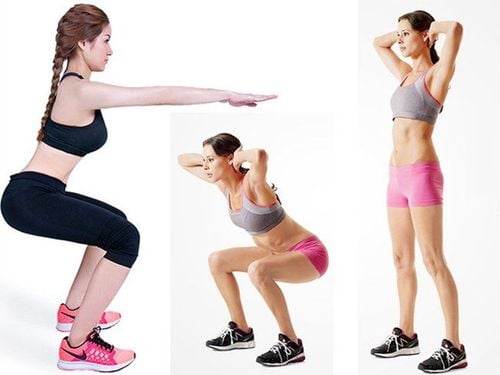
Bài tập chân làm giảm nguy cơ chấn thương
1.5 Other Benefits In addition to the benefits above, leg and lower body exercises also help:
Increase core strength; Improves overall fitness; Support weight loss process; Relieve joint pain; Increase bone density; Lower back pain relief; Enhance cognitive function; Helps the body to be more balanced; Improve posture; Improved flexibility; Stress management .
2. Some notes when doing leg exercises
2.1 Effects of not exercising your legs If you don't exercise your leg muscles, you are missing out on creating the strongest foundation for your body. A strong pair of legs will bring stability to the body, better mobility, longer range of motion, and improved organ coordination. Meanwhile, skipping leg exercises does not cause muscle to turn into fat, but over time, muscle cells will shrink while fat cells enlarge, leaving the body unbalanced. In particular, if the practitioner only regularly moves the upper body without focusing on the legs, then there will be an unbalanced body.
MORE: Exercises to slim calves
2.2 When should you skip leg exercises? When suffering from pain, injury or feeling uncomfortable, tired, the practitioner can skip a day of leg exercises. If you have a cold or have minor symptoms such as a stuffy nose, runny nose, sneezing, or sore throat, you can exercise with reduced duration and intensity.
Practitioners should skip the session completely if they have symptoms such as shortness of breath, abdominal pain or dry cough. Other symptoms that are also warning signs should temporarily stop exercising legs are fever, fatigue, widespread muscle pain.
Because pushing yourself too much can slow down the healing process or cause injury, when you feel unwell, you shouldn't try to exercise. Instead, the sick person should take time to rest to recover quickly.
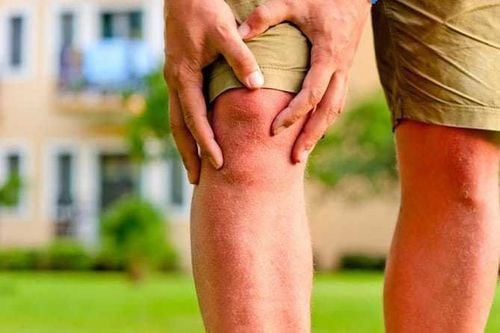
Khi bị chấn thương, người tập nên ngừng các bài tập chân đến khi phục hồi
2.3 How many days should I take off from practice? If you neglect leg exercises for a few days per week or weeks at a time, you will start to see muscle and strength loss. However, if you just skip a day of practice, it will not affect anything. On days where there isn't enough time for a full workout, the practitioner should try to do at least 15 minutes of physical activity.
To achieve the desired results, the practitioner needs to be in constant motion. This will create positive, healthy daily habits. In particular, it can take weeks to months to see results from practice. Therefore, athletes need to stick to their training plan even after seeing results to be able to maintain body strength and endurance.
2.4 Talk to a Fitness Trainer A fitness trainer can help you create a balanced movement plan that includes leg and aerobic exercises, balance, and flexibility training. active. Those who are new to bodybuilding, have an injury or want to change their current habits, etc. should consult their trainer to establish an appropriate exercise plan.
Leg exercises have many effects on the body such as increasing strength and improving overall fitness. Practitioners should maintain a regular exercise regimen according to habits to ensure the best health.
Please dial HOTLINE for more information or register for an appointment HERE. Download MyVinmec app to make appointments faster and to manage your bookings easily.
References: menshealth.com, healthline.com




